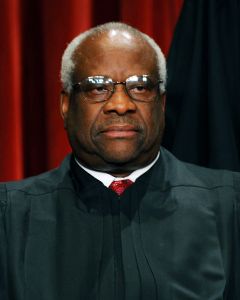
A court that's normally divided along ideological lines came together on a bedrock principle of voting rights. (Photo by Mark Wilson/Getty Images)
As the composition of the Supreme Court remains in flux following the death of one of its most outspoken justices and as the executive and legislative branches continue to battle over the timing of his replacement, the eight-member Court spoke in one voice today to affirm a bedrock democratic principle.
The case, Evenwel v. Abbott, upheld the longstanding principle of one-person one-vote and the practice of counting all persons in the drawing of state and local electoral districts across the nation. The majority of the court also robustly embraced the principle of a representational equality: “As the Framers of the Constitution and the Fourteenth Amendment comprehended, representatives serve all residents, not just those eligible to vote.”
The suit was brought by two white voters from rural districts in Texas to challenge the state’s use of total population when drawing its state legislative districts. The use of total population in state redistricting has been a nearly universal practice not only in Texas but in all 50 states and countless local jurisdictions across the country for well over 50 years. The challengers here sought to change that practice and replace it with a count of eligible voters, meaning only persons eligible to cast ballots would be counted for purposes of redistricting.
The court unanimously upheld the decision of a three-judge federal trial court dismissing the challenge out of hand on the ground that it is not a legally viable claim. Indeed, Justice Ruth Bader Ginsburg, who wrote the opinion for Court, stated, “the rule appellants urge has no mooring in the Equal Protection Clause” — the provision of the U.S. Constitution under which the challenge was brought.
What this means for voters going forward is that the status quo that has worked for our democracy for more than half a century — counting all residents for redistricting — remains fully constitutional. States and smaller locales will continue to be able to count voters and non-voters alike to determine how many persons can populate an election district.
In some ways, the opinion summoned the analytical method most commonly associated with the late Justice Antonin Scalia — originalism. The opinion carefully and thoroughly set forth the historical and constitutional underpinnings of using total population, dating back to the Constitutional Conventions, quoting Alexander Hamilton and James Madison, among others.
This would help explain the unanimity on the Court and the agreement among its most conservative members — Justices Clarence Thomas and Samuel Alito — who each wrote a separate concurrence but also roundly embraced the ultimate conclusion of the Court that the Constitution permits total population count. Justice Alito, while disagreeing with some of the majority’s historical interpretation, even went so far as to acknowledge the perils of using alternative counting methods: “These [total population] statistics are more reliable and less subject to manipulation and dispute that statistics concerning eligible voters.”
This is an argument the NAACP Legal Defense and Educational Fund, Inc. made strenuously in its amicus brief in support of Texas. Forcing states to count only eligible voters would invite political gamesmanship and potential voter disenfranchisement because the rules for voter eligibility would also determine who is counted for redistricting and who is not. The principle of one person-one vote that the Court affirmed today is a direct result of such manipulation along racial lines that characterized the better part of the Nineteenth Century.
Prior to seminal cases such as Gomillion v. Lightfoot and Reynolds v. Sims, and the passage of the Voting Rights Act 1965, states used a plethora of racially discriminatory tactics, such as electoral apportionment schemes, literacy tests, poll taxes, and outright disenfranchisement, to deny African-American political representation. The court today rejected an attempt to return to that shameful history in favor of more inclusive vision of democracy.
Indeed, the winner in today’s decision is not just the state of Texas, it is the millions of people who would have been counted out of representation. It is the 75 million children, 13 million of whom are black, who are not yet eligible to vote, but still deserve representation. It is the people living in urban areas, people on the path to citizenship, those not registered to vote — some due to racially discriminatory felon disfranchisement laws — who continue to have a seat at the table of our democracy. This re-affirmation of our commitment to an inclusive, representative democracy comes at a critical time as we begin to plan for decennial census count in fewer than four years as a more racially and ethnically diverse nation than ever before where everyone counts.






